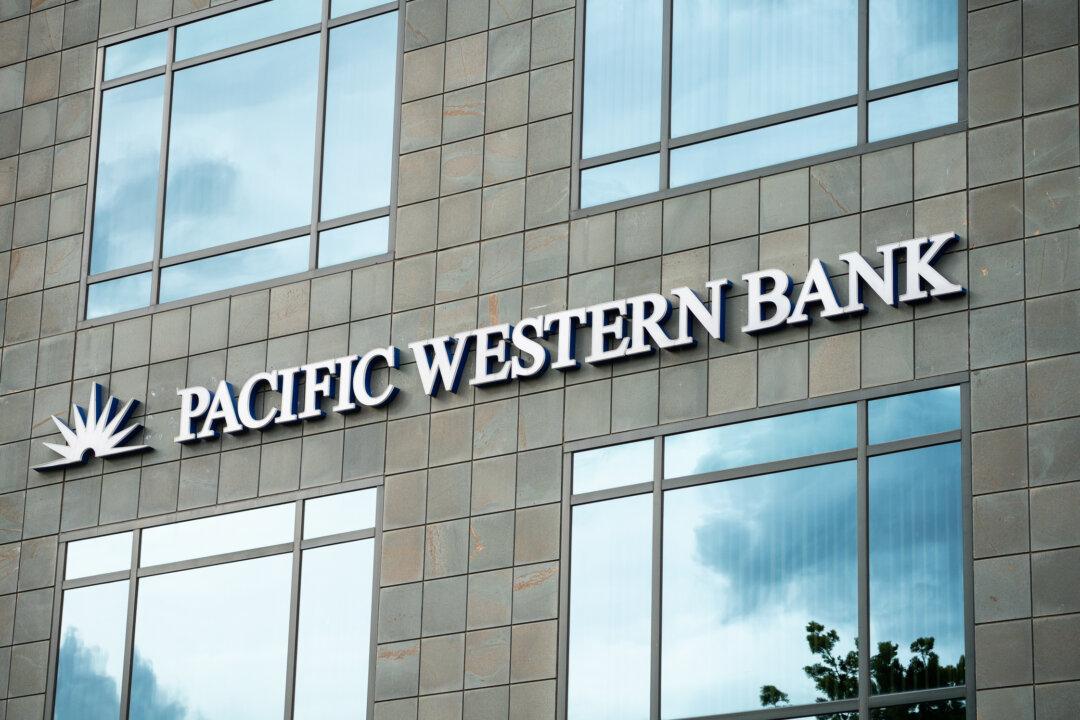Shares of Pacific Western Bank fell again on May 10 after the lender confirmed it continued to see deposit outflows of nearly 10 percent in the first week of the month.
The California-based lender disclosed in a securities filing that its deposits fell around 9.5 percent during the week of May 5, with the majority of withdrawals taking place on May 4 and 5, at a time when it confirmed it was exploring “strategic options,” including a possible sale and that it had been in contact with potential investors.




